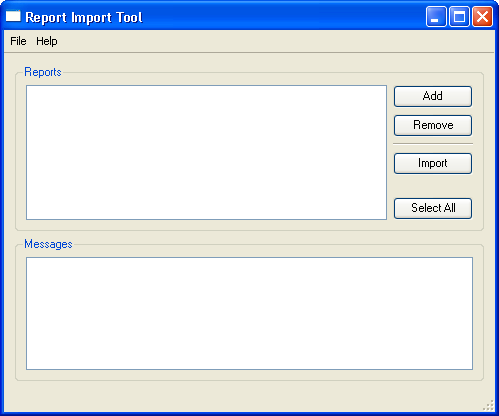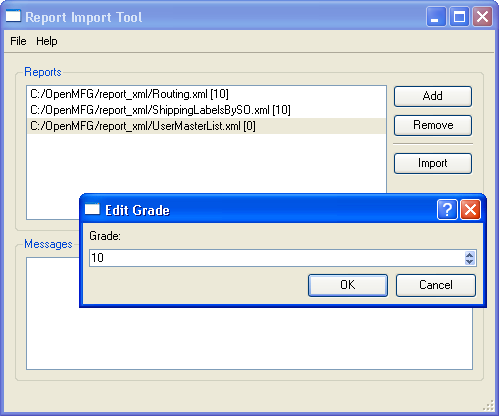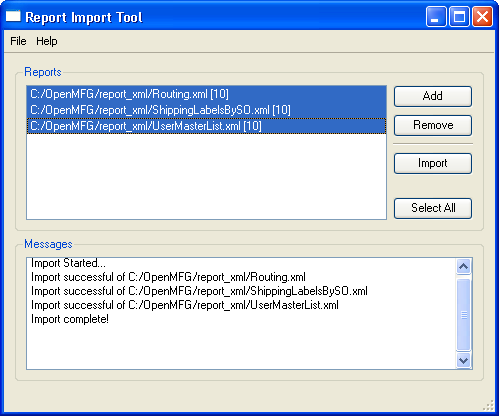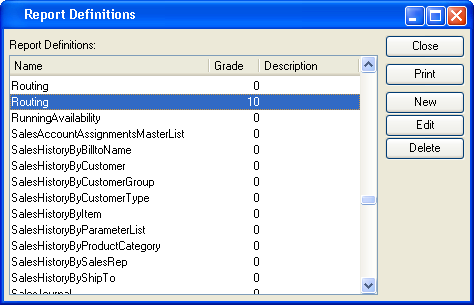
|
OpenRPT Product Guide |
The first tool we will look at is the Report Import Tool. This tool runs on all supported client platforms and provides a simple, easy to use graphical user interface importation capability. The name of the binary file that you execute from a command line to start the report import tool is importrptgui (note that on the Windows platform you will include the '.exe' suffix).
The Report Import Tool is designed to simplify the process of uploading multiple reports to an xTuple database. For optimal performance, the importrptgui file should be placed in the same directory as the xTuple ('.exe' on Windows) client file.
When you open the utility, you will notice that you are brought to the standard xTuple Log In screen. Log in to the database where you want to upload your reports. As with the xTuple client, you may click the button to change these settings.
From the command line, and in the directory where the xTuple client files and the importrptgui binary files are co-located, run importrptgui. You will see:

The definitions that you import with this tool may be newly created reports, or, updated versions of already existing reports.
Using the button on the GUI screen, browse for the directory where you have saved your report definition .xml files. Once you have located and opened the directory where the files are stored, you may add them individually by double-clicking on them one-at-a-time. Or, you may select all or a subset of the total using your window manager.

As you load reports into the list, you will see a number in brackets following the name of each report. This number is the grade assigned to each report. The reports will be loaded into the database using the grade you see here. By default this grade is zero. If you choose to change this value, you may double-click on any of the reports in the list to bring up a dialog that will allow you to set the value for the grade.

It is important to remember that when running a report, xTuple uses the report definition with the highest grade (for example, "10" runs before "9"). xTuple recommends that you never overwrite the report definition with grade "0", reserving this for the definition provided by xTuple.
If after you are done adding reports to the list you find a report which you do not want to upload, simply highlight the report and select the button. The report will be removed from the list, and it will not be uploaded.
Once you are satisfied with your list of reports and the grades you have assigned, highlight individual reports or use the button to select all of the reports for importing. After the desired reports have been highlighted, select the button. The highlighted reports will be uploaded to the database you logged into when you started your session.

The Messages section of the Report Import Tool shows the status of your import. To exit, select the option from the menu―or click on the in the upper-right hand corner of the screen.
After importing report definitions, you may want to open the xTuple report writer and view the report definitions you imported.

While report definitions can be loaded from the .xml definition file through the report writer itself, the Report Import Tool expedites this process when multiple report definitions require importation.
Now let's look at a tool that enables you to import from the operating system's command line on a client computer.